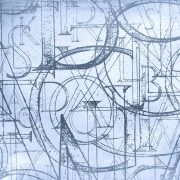|
Getting your Trinity Audio player ready...
|
A new study submitted, and accepted, in January 2018 for publication in the Journal of Complex Networks, indicates that partners in future corruption scandals can successfully be predicted using network science. The 20-page document analysed well-documented political corruption scandals in Brazil over the past 27 years, focusing on the dynamical structure of networks where two individuals are connected if they were involved in the same scandal.
Network science is an academic field which studies complex networks such as telecommunication, computer, biological and social networks, considering distinct elements or actors represented by nodes (or vertices) and the connections between the elements or actors as links (or edges).
The study was conducted by Haroldo Ribeiro, Luiz Alves, Alvaro Martins, Ervin Lenzi, and Matjaž Perc from various academic institutions in Brazil, Slovenia and Austria. The results may provide a tool for detecting corruptive practices and reducing the high cost of corruption to society.
“Corruptive behaviour in politics limits economic growth, embezzles public funds, and promotes socio-economic inequality in modern democracies,” the authors write in the abstract. Their research revealed that corruption runs in small groups of usually not more than eight people, in networks that have hubs and a modular structure that encompasses more than one corruption scandal.
Corruption is considered as one of the main factors that limit economic growth, decrease the returns of public investments, and promote socio-economic inequality in modern democracies.
Getting into the finer details of corruption
While most existing studies on corruption, such as Transparency International’s Corruption Perceptions Index, take an economic perspective, note the authors, a particular corruption process typically involves a rather small number of people that interact at much finer scales – and much less is known about how these relationships form and evolve over time.
This dearth of knowledge on the finer details of corruption, the authors say, is due in large part to difficulties in finding reliable and consistent data about those involved – partly because those people are doing their utmost to keep their corrupt activities under wraps, but also because information is leaked to media outlets that may have differing points of view. This leads to a situation of both lack of information as well as misinformation, which hinders in-depth research.
The authors analysed the corruption activities of 404 people that were involved in 65 important and well-documented scandals in Brazil, from 1987 to 2014, constructing a dynamic network and studying how the network evolved over the time period of 27 years.
The model (see feature image at the top of the page) shows the 404 nodes, representing the individuals under scrutiny, as well as 3 549 links between individuals who were involved in the same scandal. This network is composed of 14 connected components, with a giant component accounting for 77% of nodes and 93% of edges.
The overall results demonstrated that such networks reveal a great deal of information about the intricacies of the scandals.
“We show that applying methods of network science uncovers the gist of politically corrupt behaviour,” said Perc, talking to science, research and technology news aggregator Phys.org. “This is despite all odds, going against the veil of secrecy that surrounds corruption, and going against the people who are doing their best to remain anonymous and undetected.”
The analysis found that the number of people involved in corruption cases is exponentially distributed, and that the time series of the yearly number of people involved in corruption has a correlation function that oscillates with a four-year period. This indicates a strong relationship with the changes in political power due to Brazil’s four-year election cycle, which leads to a notion that general elections not only reshuffle the political elite, but also introduce new people to power who may soon exploit it in unfair ways.
The findings also revealed that scandals often involve small groups of eight or so people (presumably because smaller groups are easier to conceal). In fact, the authors note, it was relatively rare (17%) to have more than 10 people in the same corruption scandal.
The third key finding was that it was possible to identify individuals who have played central roles in multiple scandals. By employing the network cartography approach, the researchers also identified different roles individuals played over the years, and were able to identify those that are arguably the central nodes of the network.
“Ultimately, we show that future ‘partners in crime’ can be accurately predicted based on the dynamical structure of corruption networks,” said Perc. “In short, we show that politically corrupt behaviour gives away nearly all of its secrets when analysed in the realm of corruption networks.”








